Rubella
What You Need to Know
What Is Rubella?
Rubella is a viral infection.
- Among young children, the only rubella symptom is typically a rash from head to foot. Among older children and adults, the rash is preceded by cold symptoms such as low-grade fever. Symptoms typically resolve in a few days.1
- Up to half of rubella infections are asymptomatic (have no symptoms).1
- Most rubella infections are benign and not reported to public health departments.2
- Before the rubella mass vaccination program was introduced, most of the population contracted rubella and obtained lifetime immunity during youth.3
- In rare situations, rubella can be fatal. The most important complication of rubella is congenital rubella syndrome (CRS), which can result in defects in the fetus of an infected pregnant woman.1
What Are the Risks?
Cases of rubella that are fatal or result in permanent disability are rare in the United States. Research studies and national tracking of rubella data collected before the introduction of the rubella vaccination program documented the following:
- 1 in 210,000 or 0.0005% of rubella cases contracted after birth were fatal.4
- Because 89% of rubella cases either were female before child-bearing age or were male, 89% of rubella cases were not at risk of getting pregnant and infecting a fetus.5
- 1 in 29,000 or 0.0035% of unborn babies contracted CRS that was fatal or resulted in permanent disability (Fig. 1).6
What Treatments Are Available?
Because rubella resolves on its own in almost all cases, usually only rest and hydration are necessary. Immune globulin (IG) is also available for the prevention of severe symptoms in immunocompromised children exposed to rubella; however, it is not known whether IG provides protection for fetuses of expectant mothers infected with rubella.7
What About the Vaccine for Rubella?
The rubella vaccine was introduced in the U.S. in 1969 and is now available as a component of the measles, mumps, and rubella (MMR) vaccine. It has significantly reduced the incidence of reported cases of rubella infections; however, immunity from the vaccine wanes so that more than 1/3 of vaccinated children lose protection within 15 years (Fig. 2).8
The manufacturer’s package insert contains information about vaccine ingredients, adverse reactions, and vaccine evaluations. For example, “M-M-R II vaccine has not been evaluated for carcinogenic or mutagenic potential or impairment of fertility.”9 Furthermore, the risk of permanent disability and death from the MMR vaccine has not been proven to be less than that of rubella (Fig. 3).10,11
This graph shows the mortality rate of rubella contracted after birth before the vaccine was introduced and compares it to the leading causes of death in children under age 10 today. Hence, in the pre-vaccine era, the mortality rate of rubella contracted after birth per 100,000 was 0.05 for children under age 10. In 2015, the mortality rate per 100,000 for homicide was 1.3, followed by cancer (2.0), SIDS (3.9), unintentional injury (8.2), and congenital anomalies (13.6). The rate of death or permanent disability from the rubella vaccine is unknown because the research studies available are not able to measure it with sufficient accuracy.
What Treatments Are Available?
Because rubella resolves on its own in almost all cases, usually only rest and hydration are necessary. Immune globulin (IG) is also available for the prevention of severe symptoms in immunocompromised children exposed to rubella; however, it is not known whether IG provides protection for fetuses of expectant mothers infected with rubella.7
What About the Vaccine for Rubella?
The rubella vaccine was introduced in the U.S. in 1969 and is now available as a component of the measles, mumps, and rubella (MMR) vaccine. It has significantly reduced the incidence of reported cases of rubella infections; however, immunity from the vaccine wanes so that more than 1/3 of vaccinated children lose protection within 15 years (Fig. 2).8
The manufacturer’s package insert contains information about vaccine ingredients, adverse reactions, and vaccine evaluations. For example, “M-M-R II vaccine has not been evaluated for carcinogenic or mutagenic potential or impairment of fertility.”9 Furthermore, the risk of permanent disability and death from the MMR vaccine has not been proven to be less than that of rubella (Fig. 3).10,11
This graph shows the mortality rate of rubella contracted after birth before the vaccine was introduced and compares it to the leading causes of death in children under age 10 today. Hence, in the pre-vaccine era, the mortality rate of rubella contracted after birth per 100,000 was 0.05 for children under age 10. In 2015, the mortality rate per 100,000 for homicide was 1.3, followed by cancer (2.0), SIDS (3.9), unintentional injury (8.2), and congenital anomalies (13.6). The rate of death or permanent disability from the rubella vaccine is unknown because the research studies available are not able to measure it with sufficient accuracy.
References
- Centers for Disease Control and Prevention. Epidemiology and prevention of vaccine-preventable diseases. 14th ed. Hall E, Wodi AP, Hamborsky J, Morelli V, Schillie S, editors. Washington, D.C.: Public Health Foundation; 2021. 301-2. https://physiciansforinformedconsent.org/cdc-pink-book-14th-edition-2021.
- Magno H, Golomb B. Measuring the benefits of mass vaccination programs in the United States. Vaccines. 2020 Sep 29;8(4)Suppl:5. https://pubmed.ncbi.nlm.nih.gov/33003480/; before the rubella mass vaccination program was introduced, there were 4 million annual rubella cases of which 152,000 (about 4%) were reported.
- National Communicable Disease Center. Rubella surveillance, June 1969. Atlanta, GA: National Communicable Disease Center; 1969. 7. https://physiciansforinformedconsent.org/rubella-surveillance-june-1969-7.
- Magno H, Golomb B. Measuring the benefits of mass vaccination programs in the United States. Vaccines. 2020 Sep 29;8(4):5. https://pubmed.ncbi.nlm.nih.gov/33003480/; before the rubella mass vaccination program was introduced, there were 4 million annual rubella cases of which 19 were fatal cases contracted after birth — a rate of about 1 in 210,000.
- National Communicable Disease Center. Rubella surveillance, June 1969. Atlanta, GA: National Communicable Disease Center; 1969. 7. https://physiciansforinformedconsent.org/rubella-surveillance-june-1969-7; the report recorded that 13,717 out of 120,844 (11%) cases of rubella occurred among females of age 15 or older.
- Magno H, Golomb B. Measuring the benefits of mass vaccination programs in the United States. Vaccines. 2020 Sep 29;8(4):5. https://pubmed.ncbi.nlm.nih.gov/33003480/; the study observed 140 annual cases of CRS resulting in death or permanent disability out of 4 million births — a rate of about 1 in 29,000.
- Young MK, Cripps AW, Nimmo GR, van Driel ML. Post-exposure passive immunisation for preventing rubella and congenital rubella syndrome. Cochrane Database Syst Rev. 2015 Sep 9;(9)CD010586:3. https://pubmed.ncbi.nlm.nih.gov/26350479.
- Davidkin I, Jokinen S, Broman M, Leinikki P, Peltola H. Persistence of measles, mumps, and rubella antibodies in an MMR-vaccinated cohort: a 20-year follow-up. J Infect Dis. 2008 Apr 1;197(7):955. https://pubmed.ncbi.nlm.nih.gov/18419470/.
- Merck. Rahway (NJ): Merck and Co., Inc. M-M-R II (measles, mumps, and rubella virus vaccine live); revised 2023 Oct [cited 2024 Jan 27]. 8. https://www.merck.com/product/usa/pi_circulars/m/mmr_ii/mmr_ii_pi.pdf .
- Physicians for Informed Consent. Newport Beach (CA): Physicians for Informed Consent. MMR (measles, mumps, and rubella) – vaccine risk statement (VRS); 2024 Aug. https://physiciansforinformedconsent.org/mmr-vrs.
- Demicheli V, Rivetti A, Debalini MG, Di Pietrantonj C. Vaccines for measles, mumps and rubella in children. Cochrane Database Syst Rev. 2012 Feb 15;2012(2): CD004407. https://pubmed.ncbi.nlm.nih.gov/22336803/.
- Centers for Disease Control and Prevention. Washington, D.C.: U.S. Department of Health and Human Services. 10 leading causes of death by age group, United States—2015. https://physiciansforinformedconsent.org/cdc-leading-causes-of-death-age-group-2015/.
- Magno H, Golomb B. Measuring the benefits of mass vaccination programs in the United States. Vaccines. 2020 Sep 29;8(4):5. https://pubmed.ncbi.nlm.nih.gov/33003480/; the study observed 19 annual fatal cases of rubella contracted after birth. Because there are about 40 million children under age 10, there was no more than 1 in 2.1 million children (40 million ÷ 19) infected with a fatal case of rubella after birth.
Published 2024 Aug

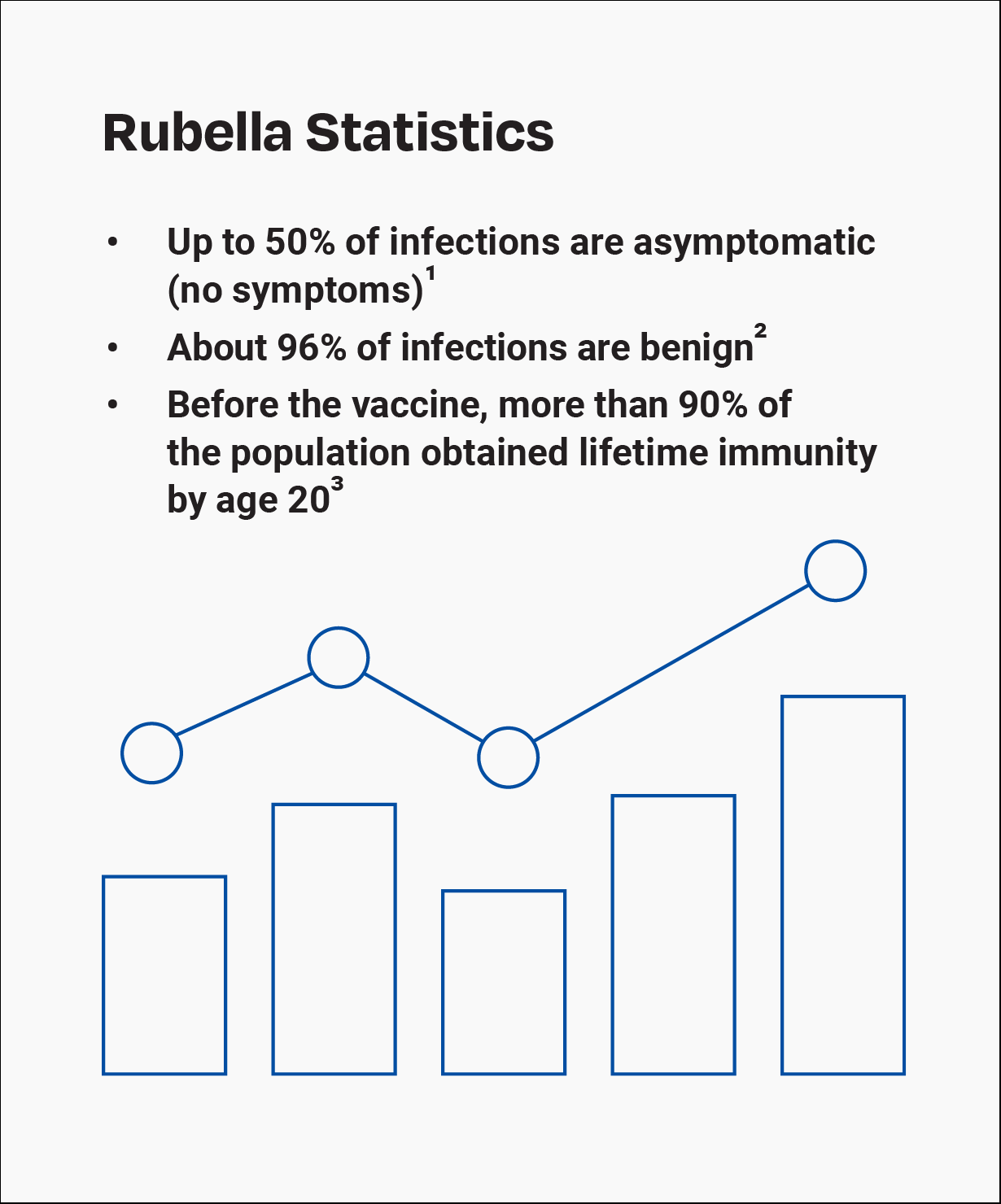
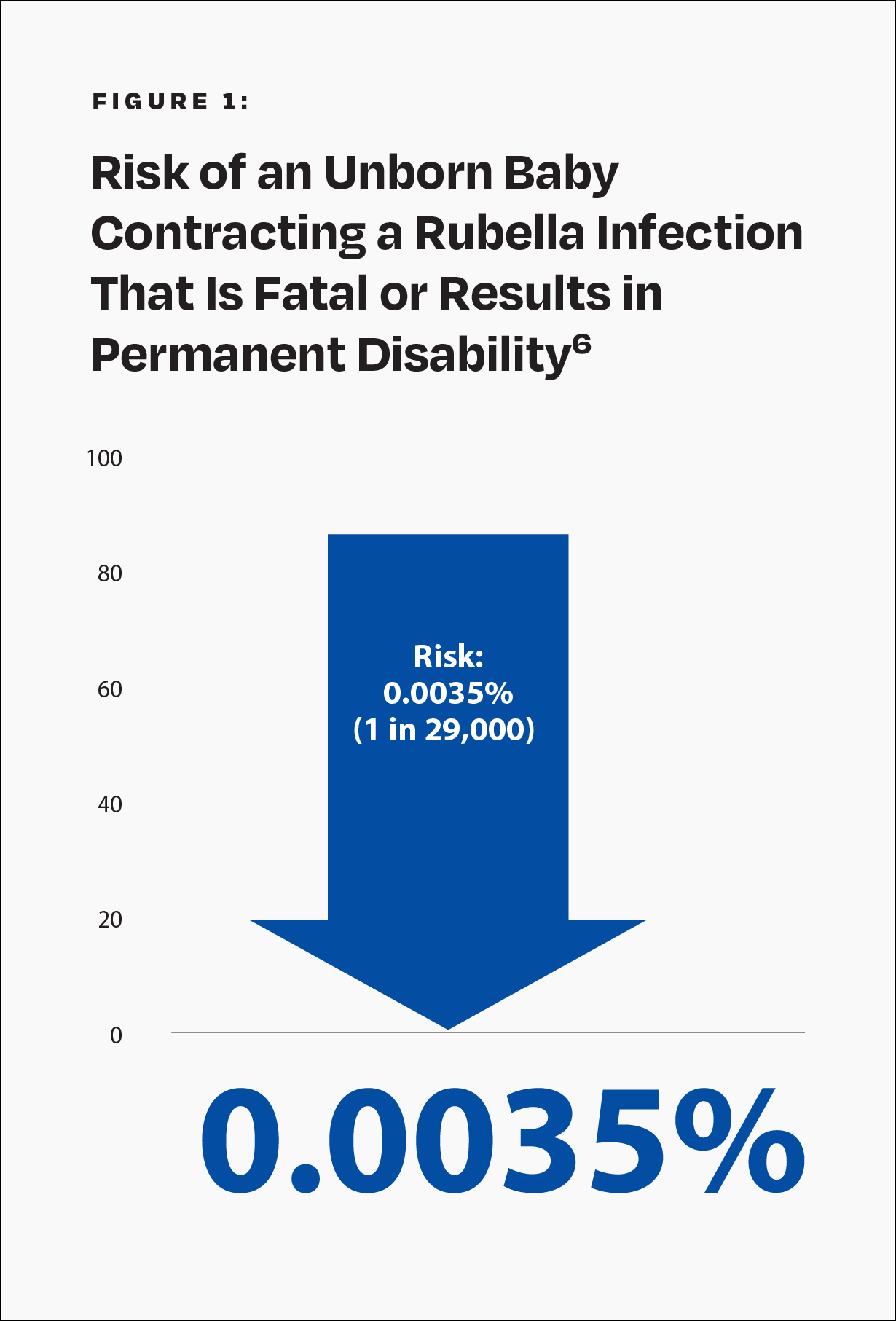
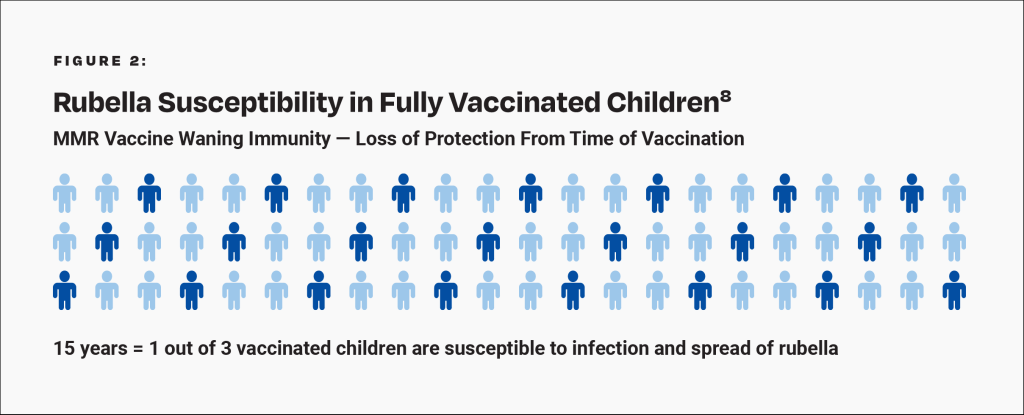
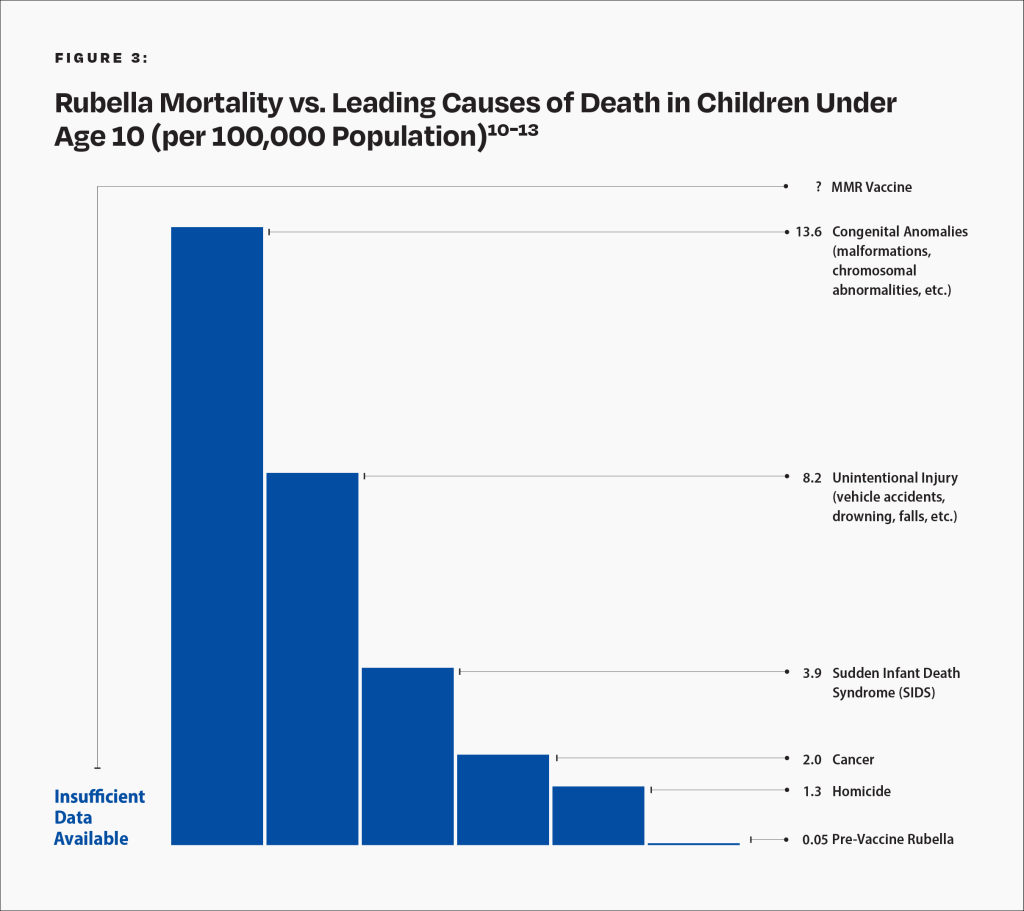
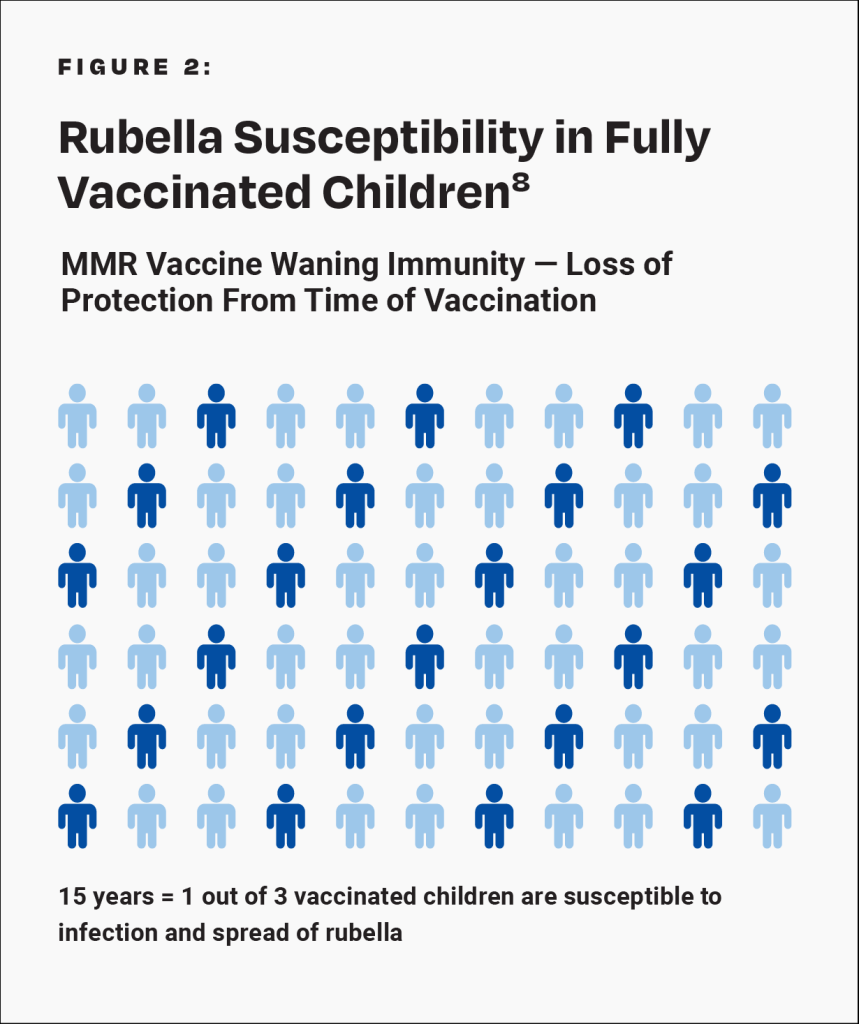
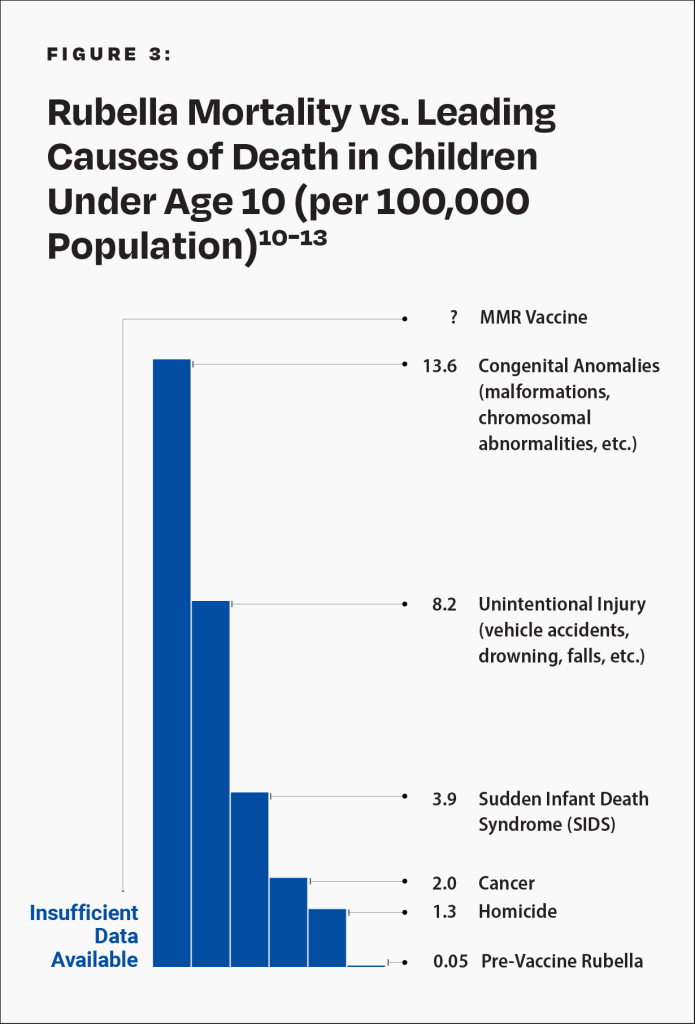
Rubella – Disease Information Statement (DIS)